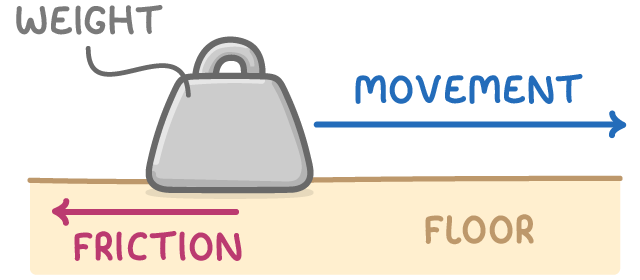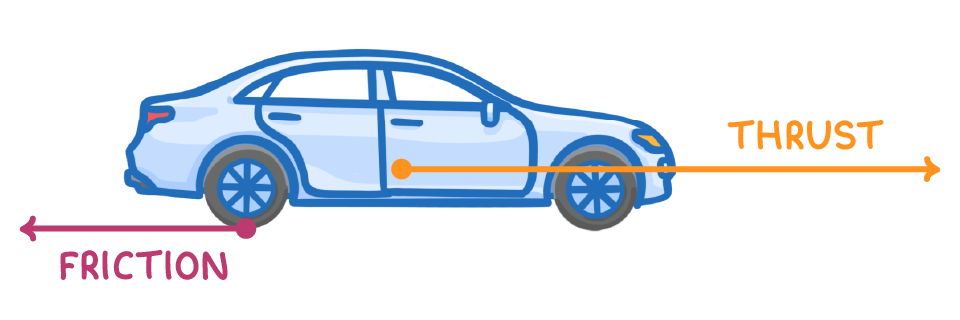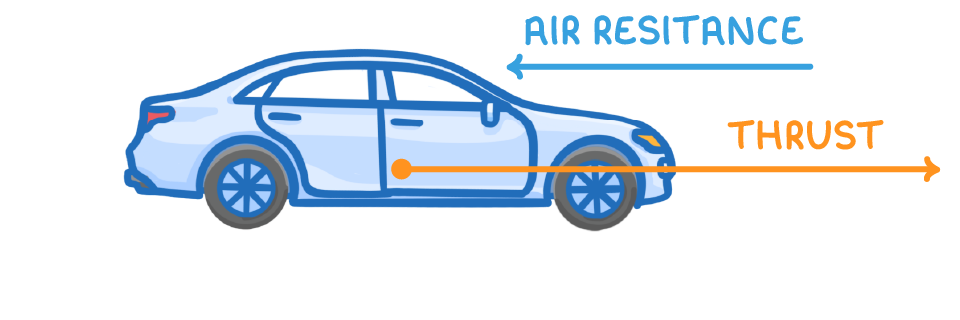Friction
This lesson covers:
- What friction is
- The advantages of friction
- The disadvantages of friction
What is friction?

Friction is a force that opposes the relative motion between two surfaces that are in contact.
For example, when you try to move an object across a surface, friction pushes against the object in the opposite direction to its movement.
Advantages of friction
1. Friction allows motion to start and stop.
- The friction between tyres and the road surface allows for acceleration, braking, and changing direction.
- Without this friction, the tyres would slip.
2. Friction prevents slipping.
- The friction between our hands and an object allows us to grip things.
- For example, the friction between our hands and the handlebars on a bike lets us hold on while riding.
Disadvantages of friction 1

1. Friction wastes energy.
- Friction converts useful energy into heat energy which is wasted.
- The heat generated in tyres is an example of this energy loss.
Disadvantages of friction 2

2. Friction limits top speed.
- At high speeds, air resistance is a form of friction which takes a lot of energy to overcome, limiting top speeds.
- Aerodynamic shaping aims to minimise this frictional force.